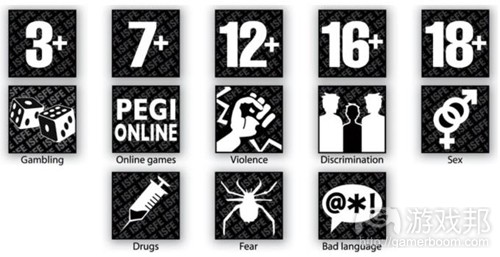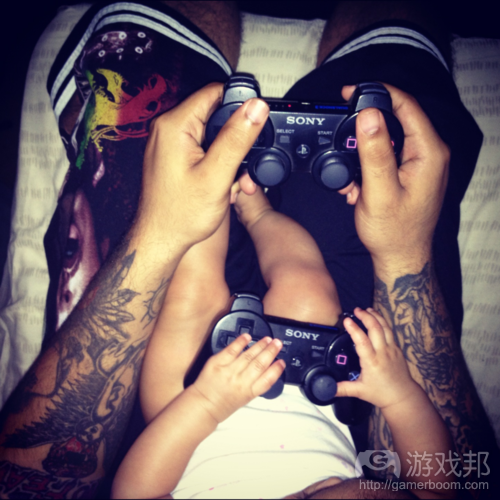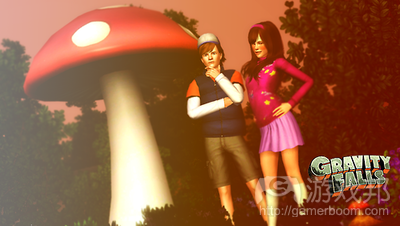分析不同年龄层次的玩家群体特征
作者:Thiago Attianesi
我在本文中提出的年龄是导致上图所示现象产生的重要原因。但在本文中,我关注的是不同年龄如何影响玩家的游戏活动。
作为人类,我们觉得自己与其他动物是不同的,甚至认为我们是独一无二的:每个人都是一个独特的个体(这不是说我们没有任何共性),虽有差异,但基本上与其他人也存在相似之处。通常说来,为了推出一种产品,我们把人分成几个类别,分类的标准有很多,如足球运动员、社会地位、地域和母语等。分类并没有官方标准,但主导市场的通常是两个变量。我在本文中要说的是它们其中一个:
年龄层次:
0-3岁——新生儿/婴儿:对于大部分游戏开发者而言,这类群体是没有太多价值的,因为他们存在几个与游戏元素有关的局限性,如协调能力、声音识别能力、语言能力、活动能力和决策能力等。
4-5岁——学龄前幼儿:这个年纪的孩子已经对游戏产生兴趣了。懂得调整游戏的规则、选择合适的游戏的父母,几乎总是带着自己的孩子玩游戏。上图表现的就是父母带孩子玩游戏的情景。
6-9岁——儿童:这个年龄的孩子已经具有“理性”了(游戏邦注:孩子产生“理性”的年纪越来越靠前了,因为新一代的儿童更加聪明了)。这个年龄的孩子通常上学了,能够阅读、思考、解决问题以及更容易与他人进行社交互动。这些孩子对玩游戏非常感兴趣,懂得自己判断自己喜欢什么或不喜欢什么——不再是由父母帮他们决定玩什么游戏。
10-13岁——少年过渡期:这是一个年纪分水岭,因为营销人员开始把这个群体定位在“儿童”和“少年之间”。这个阶段的孩子的思想更加深刻了。他们的大脑成熟了很多,开始发现自我和自己的个性。因此,他们对自己的兴趣更加热情并且竞争意识比较强,特别是男孩子。
14-18岁——少年:正是在这个阶段,男孩和女孩之间的差别变得非常明显。伴随着自我发现,男孩的竞争意识和支配意识进一步增加,而女孩更加关注现实问题,变得敏感,交流欲望强烈。这些变化导致他们喜欢尝试新事物,有些就出自游戏。
19-24——青年:这是成年后的第一个阶段,是一个重大的过渡期。这个年龄段的人开始产生“严肃地生活”、“家庭”、“金钱”和“独立”的观念,因此更多地把精力放在“成年人”的问题上。他们通常更少玩游戏,但又因为他们对自己的喜恶很了解、具有一定的经济自由,所以可能成为重要的消费者。
25-34岁——青壮年:这个阶段的人通常不可能一天24小时地玩游戏了,因为时间有限,每分每秒都很珍贵。但他们当中有许多人是休闲玩家,口袋里揣着昂贵的游戏设备,不但玩而且花钱玩游戏,但他们也努力承担与家庭有关的责任,偶尔把他们的游戏给孩子看。这个年纪的人甚至有很多仍把游戏当作主要的兴趣爱好,所以他们构成重要的玩家基础。他们也知道自己喜欢什么,但不会轻易改变自己的立场,不容易被说服。
35-59岁——中年:这些人事业有成,儿女也比较大了,生活比较稳定,虽然有责任感、经验丰富,但不太能学习新技术。中年人普遍选择玩休闲游戏,或是做些家庭互动、经验分享甚至跨年龄段的活动(妻子40岁、大女儿23岁,大儿子16岁、小儿子8岁)。
60岁以上——老年:考虑到人类寿命的延长,这个年龄段还可以进一步细分,但出于60岁以上的人具有共性,我们只要划分到这一步就够了。上了这个年纪的人,有大把自由的时间,身体活动能力下降了,社交互动更复杂了。他们通常退休了,儿女也离开家庭了。有些怀旧的老人会找回年轻时玩过的游戏再过一把瘾,也有些老人会寻求改变。这些人希望通过增加社交活动获得快乐。比如,经常可以看到老年人一起打高尔夫球、网球、桥牌、扑克甚至到虚拟世界如MMO中寻求安慰,仿佛忘记了自己的年龄。
当然,按年龄划分的方式还有很多,本文只是我根据自己阅读、学习和商业经历做出分法。不敢说是唯一正确的分法,但可以作为探索和开发游戏的参考。
一个很有趣的地方是,年轻的群体是按身体和心理成熟情况划分的,而年老的群体是以可支配时间和社交特征来划分的。
游戏是一种有趣的活动,可以超越所有年龄层次。你可以借鉴其他人的划分方法,但方法不要太泛泛而谈或一般化。你应该考虑的最重要的问题是,儿童的意识是非常强的,为了与他们打好交道,你必须以非常儿童化的语言与他们交流。(本文为游戏邦/gamerboom.com编译,拒绝任何不保留版权的转载,如需转载请联系:游戏邦)
Demographics: What’s the Difference?
by Thiago Attianesi
The reasoning that I will present now serves several areas of creation, but here we focus specifically on games and how different ages affect this age-old activity.
As humans, we feel that we’re different from all animals, and in fact we are unique: each person is a unique individual (which does not mean that we have nothing in common), and has differences, but mostly has similarities with others. Generally speaking, in order to generate a product, we separate people into groups, which can be different: football players, social class, location, and mother tongue, among others. There is no official means of separating these groups, but two variables are very dominant in the market, and I’ll get one of them in this post:
Age Groups:
0-3 years: Newborns / Babies – This group does not have much value for most game developers, as this audience has several limitations related to the area of games, including coordination, sound discrimination, power of speech, movement and choice.
4-5 years: Preschool – This age is already gaining interest in games, almost always presented by their parents, since they have the power to adjust the rules of the game, and select what is appropriate for their children. Here is an outline of parents and children playing together.
6-9 Years: Children – Known as the “age of reason” (this age is decreasing with succeeding generations, as children are becoming smarter). Children this age usually are attending school, able to read, think, solve problems and interact socially with other people more easily. Usually these children feel very motivated to interact with games, and get to choose what they like or dislike; it is no longer the parents who give them what they want.
10-13: Pre-Adolescence – This is a new age bracket, as marketers have begun to recognize this group something between “children” and “teenagers”. Pre-adolescents can already think more deeply. There is a lot of brain development at this point, which leads to the name “age gap” due to several discoveries about yourself and your personality. Thus pre-teens begin to become passionate about their interests and it is very common to find matches between part of the public, especially the male.
14-18: Adolescence – At this point a gigantic difference between boys and girls develops, with all the self-discovery, boys begin to forward or deepen in competitions in feelings of domination while girls focus on real world issues, precision in describing feelings and communication becomes very strong. These changes make these young people want to try new things, and some of these might come through games.
19-24: Young Adults – Here now is the first stage of adult life. This marks an important transition, which is distinguished by factors like “serious life”, “family”, “money”, and “independence”, thus placing different occupations and other concerns for the “adult.” Thus, adults in general play less, but are also an audience who know well what they like or not, and have money to spend on their personal pleasures, making possible large consumers .
25-34: New Adults – Now 24-hour-a-day gaming is no longer frequent, as time is shorter, and minutes become more precious. Here there are many casual gamers with really expensive and powerful devices in their pockets, playing and spending money on their games, but also working hard with responsibilities related to family, occasionally showing their games to children, nephews and others. Even within this range there is a large number of people who play as their primary hobby, so are great influencers. They also know what they like, but do not change their minds easily and convince many of their vision.
35-59: Old Adults – Here are adults with advanced careers, already have children some years ago and are more stable with their lives, and have responsibility and experience but less ability to learn new technologies. It is very common at this age to seek casual games, or those that allow interaction with the entire family and exchange their experiences, even mixing ages (wife 40, son 8, son 16, daughter 23).
60+: Advanced Age – This age is beginning to subdivide given the increased length of life, but for now we will face more than 50 as a single division that provides gigantic free time and some difficulty moving and with complex interactions . Here the children have left home, we live in retirement. Related to games, some nostalgia pulls us back to playing what gave pleasure in younger days, while others seek certain changes. These people have little social contact and tend to seek it to feel better. It is very common to seek people of the same age for championship golf, tennis, bridge, cards and even something broader, forgetting one’s age and entering a virtual world like a massively multiplayer online game (MMO).
Sure, there are several ways to divide groups by age, but this is my division, based on what I read, experienced and learned from studies books, business and graduate school. Not the right vision, it does not exist yet, but it’s something that can be based to explore and develop their game.
It is interesting to see that youth groups are separated by physical and mental development, while older separation is the availability of time and social character.
And to conclude it is good to remember that games are fun activities and can strike all ages, and you can quote different people who fall in other subdivisions, that is completely natural, and should not be defensive to feel generalized or to generalize others . But the most important question you raise is a very strong sense of all childhood, so in order to truly communicate with these people in a playful manner, you must speak the language spoken in childhood.(source:gamasutra)
上一篇:分析手机应用功能日趋同质化的原因













































 闽公网安备35020302001549号
闽公网安备35020302001549号